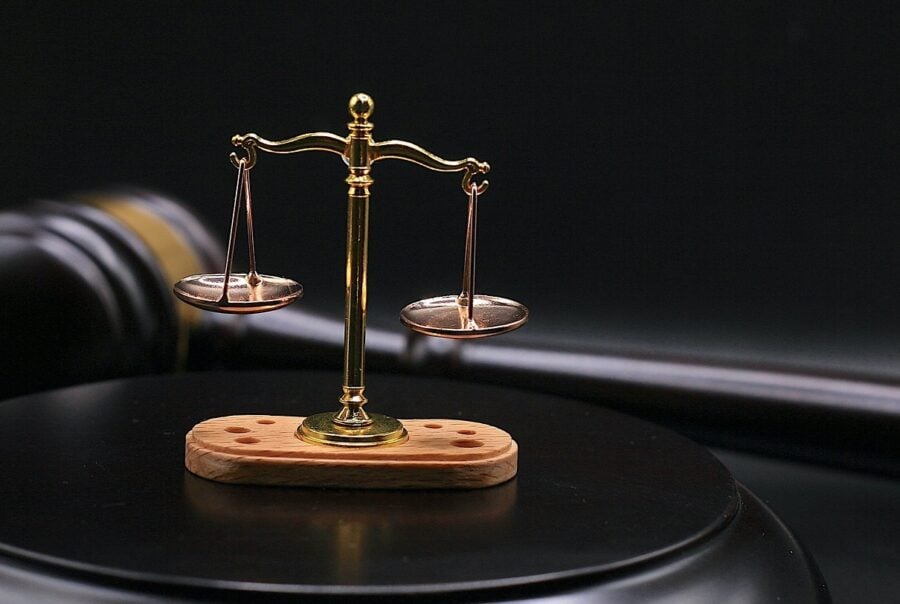If you are disabled to the point of not being able to work, the Social Security Administration (SSA) has multiple benefit options. In fact, depending on your financial situation and work history, you might be eligible for both Supplemental Security Income (SSI) and Social Security Disability Insurance (SSDI).
The SSA designed SSI and SSDI coverage to ensure that people who are sick, injured, or handicapped have the financial assistance they need. If you are considering filing for social security benefits, it’s a good idea to research the possibility of collecting SSI and SSDI at the same time.
The social security benefits application process is quite long and complex. Working with the House of Justice will greatly increase your chances of being awarded SSI and SSDI coverage. Call 1-800-840-4040 to discuss your filing today.
What is the Difference Between SSI and SSDI?
While both SSI and SSDI benefits aid people who are no longer able to earn a living, qualifications for both programs are quite different. While SSI coverage is based on your current financial situation, SSDI is related to your work history.
Criteria for SSI Benefits
You become eligible for SSI by being blind, disabled, or over the age of 65. Beyond these disability requirements, you must have limited income and resources, while also being “a U.S. citizen or national, or in one of certain categories of aliens.”
One of the most important things to remember about SSI is that it has nothing to do with your work history. In fact, you can get SSI coverage even if you have even had a job. Rather, the SSA gauges your ability to earn SSI on your financial state of affairs.
As the SSA explains, “you may be able to get SSI if your resources (the things you own) are worth no more than $2,000 for a person or $3,000 for a married couple living together.” Things the SSA counts as resources include “cash, bank accounts, stocks and bonds.”
Criteria for SSDI Coverage
Qualifications for SSDI are based on your medical condition and work history.
Unless quite young, most SSDI claimants must prove that they worked legally in the U.S. for 5 of the past 10 years. They must show that their medical condition matches the stipulations set forth in the SSA Blue Book.
Since you contribute to social security by working and paying taxes, eligibility for SSDI is bound to your work history. However, unlike SSI, your ability to get SSDI coverage has nothing to do with your current financial situation. As long as you meet minimum work history requirements, you’re eligible for SSDI – regardless of your savings or assets.
Can You Collect SSI and SSDI at the Same Time?
Depending on the nature of your disability and your work history, it is possible to collect both SSI and SSDI at the same time. In fact, many people apply for both benefits when they initially file their social security claim with the SSA.
While it’s not unusual for social security recipients to have concurrent coverage, it’s almost always the case that SSDI payments reduce your SSI income.
As aforementioned, besides your disability, your eligibility for SSI is based on your total financial resources. The SSA explains it like this, “in 2023, a person must have less than $934 a month in unearned income to receive SSI.” Therefore, when combined social security payments go beyond the $934 monthly threshold, extra money is subtracted from your SSI payments.
When is it a Good Idea to File for both SSI and SSDI?
There are many situations when applying for both SSI and SSDI could be beneficial.
Even if you are approved for SSDI benefits, you have to wait 5 months before receiving your first payment. However, SSI benefits can kick in just a month after receiving approval from the SSA. As such, SSI payments can keep you covered while you wait for larger SSDI benefits to kick in.
Having concurrent SSI and SSDI assistance also gives you more options with health insurance. In fact, combining both benefits allows you to utilize the best parts of Medicaid and Medicare.
Can I Apply for SSI if I Already Have SSDI? Or Vice Versa?
There might be circumstances when you need to apply for SSI after you already have SSDI, or vice versa.
If you are receiving less than $934 per month with SSDI, it’s likely a good idea to file for SSI after you’re already an SSDI beneficiary. This is often the case with people who had low-paying jobs that translate into low monthly SSDI payments.
It’s also possible to apply for SSDI if you already have SSI. If you have a complex work history that will take some time to explain, you can collect SSI payments while you get your SSDI documentation organized.
Can I Get Back Pay for SSI and SSDI at the Same Time?
Since it is possible to get concurrent SSI and SSDI coverage, it’s also possible to get back pay for each at the same time. For both SSI and SSDI, milestones such as disability onset, application date, approval date, and entitlement date dictate your ability to get back pay.
The SSA offers back pay for SSI based on the number of months between your initial application and date of approval. However, with SSI, you cannot get retroactive pay for any time before your application date.
The SSA offers back pay for SSDI for the period between your disability onset date and your approval date. However, the SSA subtracts 5 months’ worth of back pay from this period to account for the 5-month SSDI waiting period. With SSDI, you can also get retroactive payments all the way back to your disability onset date – not just the date of your initial application.
Need Help with Social Security Benefits? Talk to the House of Justice
At the House of Justice, we encourage you to apply for both SSI and SSDI in your initial social security filing. Working with our legal team will ensure that you have the best possible chance of being awarded benefits.
Contact Us today to start filing a claim.
Hours - Monday through Friday from 8am to 6pm. (PST)




